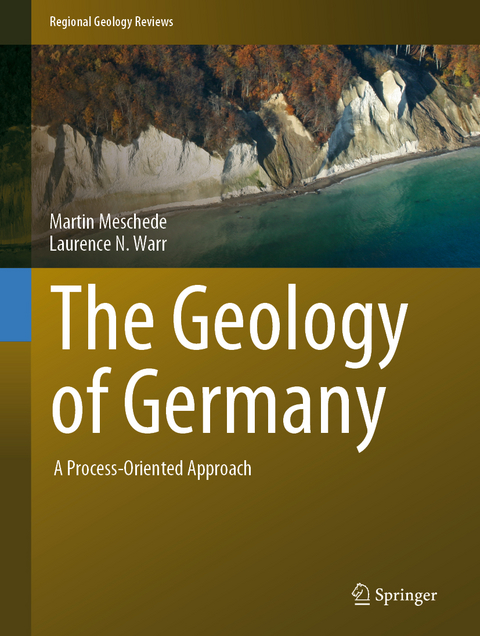
The Geology of Germany
Springer International Publishing (Verlag)
978-3-319-76101-5 (ISBN)
This richly illustrated book presents Germany's geological evolution in the context of the Earth's dynamic history. It starts with an introduction to Geology and explains the plate tectonic development, as well as the formation of both ancient and recent mountain belts - namely the Caledonian, Variscan and the modern-day Alps - that formed this part of Europe. A dedicated chapter discusses the origin of earthquakes in Germany, the occurrence of young volcanic rocks and the various episodes of rock deformation and metamorphism at these complex crossroads of plate tectonic history.
The book highlights Germany's diverse geological history, ranging from the origin of the Earth, the formation of deep crystalline rocks, and their overlying sedimentary sequences, to its more recent "ice age" quaternary cover. The last chapter addresses the shaping of the modern landscape. Though the content is also accessible for non-geologists, it is primarily intended for geoscience students and an academic audience.
Martin Meschede (born 1957) is Professor in regional and structural geology at the University of Greifswald since 2001. From 1986 to 2001 he was a research fellow at the University of Tübingen. He works largely in themes dealing with plate tectonics, marine geology, geodynamics, structural geology and the regional geology of Central America, the east Pacific area and northern central Europe. In addition to other scientific publications, he coauthored together with Wolfgang Frisch (Tubingen/Vienna) the text book Plate tectonics and acted together with Jan Harff (Sczcecin/Poland), Sven Petersen (Kiel) and Jörn Thiede (Kiel/St. Petersburg/Russia) as editor for the Encyclopedia of Marine Geosciences. Laurence Warr (born 1965) is Professor in economic geology and geochemistry at the University of Greifswald since 2007. From 1990 to 2002 he was a research fellow at the University of Heidelberg and between 2003 and 2007 researched for the CNRS at the University of Strasbourg. He works largely in the field of clay mineralogy, diagenesis, metamorphism and deformation processes in fault zones. His regional geology interests lie in SW England, central Europe, California and New Zealand. In addition to other scientific publications, he is a contributing author to the text book Geological History of Britain and Ireland (2009; Wiley, 2nd edition).
1 Germany's geological evolution in the context of the Earth's dynamic history.- 2 Introduction to Geology and explains the plate tectonic development.- 3 Formation of both ancient and recent mountain belts - namely the Caledonian.- 4 The origin of earthquakes in Germany, the occurrence of young volcanic rocks and the various episodes of rock deformation.
"This is a very high-quality production. Anyone with even just a minimum of geological background who wants to understand more about the geology of Germany, and of central and north-west Europe in general, will find this volume invaluable. For anyone contemplating a geology field trip to Germany, this book is a 'must'. Highly recommended." (Jur Snijder, Proceedings of the Open University Geological Society, Vol. 6, 2020)
| Erscheinungsdatum | 15.11.2018 |
|---|---|
| Reihe/Serie | Regional Geology Reviews |
| Zusatzinfo | XXXVII, 304 p. 278 illus., 276 illus. in color. |
| Verlagsort | Cham |
| Sprache | englisch |
| Maße | 210 x 279 mm |
| Gewicht | 1075 g |
| Themenwelt | Naturwissenschaften ► Geowissenschaften ► Geologie |
| Naturwissenschaften ► Geowissenschaften ► Geophysik | |
| Schlagworte | Alpine Geology • Buntsandstein • Eifel volcanism • historical geology • rhine graben • Saxothuringikum • Structural Geology • Variscan Orogeny |
| ISBN-10 | 3-319-76101-3 / 3319761013 |
| ISBN-13 | 978-3-319-76101-5 / 9783319761015 |
| Zustand | Neuware |
| Haben Sie eine Frage zum Produkt? |
aus dem Bereich


